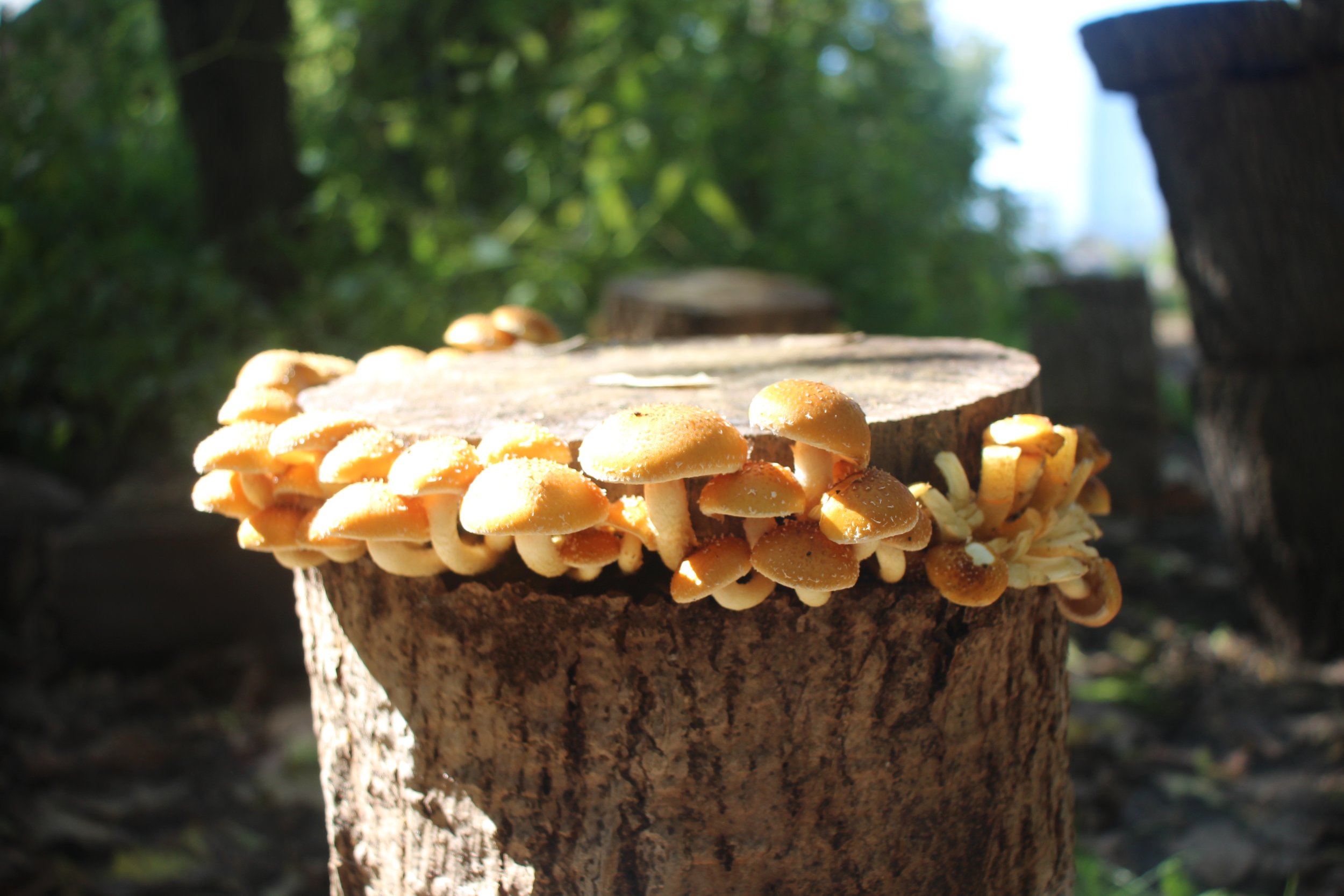Mushroom Farming at the Intervale
Written by Abra Levin, Communities of Practice intern
Forest Farming involves the sustainable cultivation of non-timber forest products (NTFPS). This agroforestry practice enhances income opportunities for farmers while creating greater strength and resilience for our ecosystems and aiding in forest management…all in the same process. At the Intervale, we are coming into our second year of mushroom farming, and after the first, we are enthusiastic about this year's yield of oyster mushrooms as well as chestnut. We are hosting a workshop on Tuesday, May 9th, for anyone to learn more about mushroom farming. Please join us!
Why Mushrooms?
As touched on in our Agroforestry and Forest Farming blog posts, there are 4 types of NTFPs. Mushrooms are one of the most accessible and most profitable Edible NFTPs. Demand for mushrooms is consistent and increasing, making the market for selling gourmet mushrooms very profitable for farmers. Forest Farming of any kind serves farmers well in that NTFPs diverse crop production, creating a way for farmers to not only generate additional products but also increase the sustainability of their income by having a diverse variety of goods.
Looking through the ecological lease, there are many studies that prove that having a greater amount of biodiversity will increase the overall abundance of an area long term, due to various benefits including soil health, pest resistance, weather reliance, etc. When we allow ecosystems to have the diversity that they have nurtured for millions of years, our land will flourish with natural abundance and resilience, both aiding the security of our community farmers, the land, and the community itself.
Back to fungi…
So you want to grow mushrooms… Here’s how we are doing it at the Intervale!
The first step for log-based mushroom cultivation is choosing the species of log. At the Intervale, our mushroom farming project started with Boxelder and Cottonwood, two abundant native species in the region. Due to their abundance, and the frequent need to cut or buck up leaning boxelder, these two species were great candidates for totem log inoculation. After selecting the species, the next step is to select the spawn. For these two species, we decided to purchase Chestnut, Lions Mane, and two forms of Oyster mushrooms; Pohu and Summer White. We purchased 5.5 pounds of each which subtotaled 102 dollars. In the first autumn alone, our mushrooms fruited beautifully, with loads of mushrooms for the community to forage and collect for free.
Our best estimate for the Chesnuts and Oysters we harvested (Lion’s mane takes another year to start fruiting) is 11 pounds (which, by estimations, would provide a positive return on investment, and thats not counting the next few years of fruiting!). This spring, we have decided to try Shitakii mushroom farming as well, which has a particularly large market. Shiitake are known to grow well on oaks and hard maples though, we are currently experimenting with Buckthorn and Norway maple as part of a citizen science project with our provider, Field, and Forest. These two species are both invasive to our area meaning eradication and management are of utmost importance to preserve the health and vitality of our ecosystem. Because we are bucking up these trees already (chopping up fallen trees), we are attempting to upcycle them for mushroom farming. Come next summer, we will be able to contribute meaningful data on whether or not these species can yield an abundance of fruit.
After buying spores, it is time to inoculate the logs with spawn which is best performed in early spring, three weeks after the tree is felled. We chose to use sawdust spawn with the totem method (stacking) for our first year, but for our shiitakes this year, we will be plugging holes with spawn instead. This Is done by drilling holes in each log and then inoculating the bolts with an injection of sawdust spawn. We then wax the bolt to help seal n moisture. Choosing the location of your laying yard is important as well. Mushrooms are special in that they must be grown under shade, which is great in that it allows for more trees to remain in place nearby. Proximity to water is very important as well. After inoculation, the spawn must incubate, allowing the fungus to colonize the wood though afterward, logs will continue to fruit each year for every 1 inch of diameter (if the logs are of good quality) and can fruit biannually as well. Our harvest began about 5 months after inoculation.
There are many guides available to help farmers with mushroom log farming, including those specifically for shitakes and others (link in). We are hosting a workshop on Mushroom farming in May … Please come join us!
We hope to see you around our oyster and chestnut mushroom logs this spring (and shiitakes the next), as there will be many to freely harvest throughout the summer. 🍄




